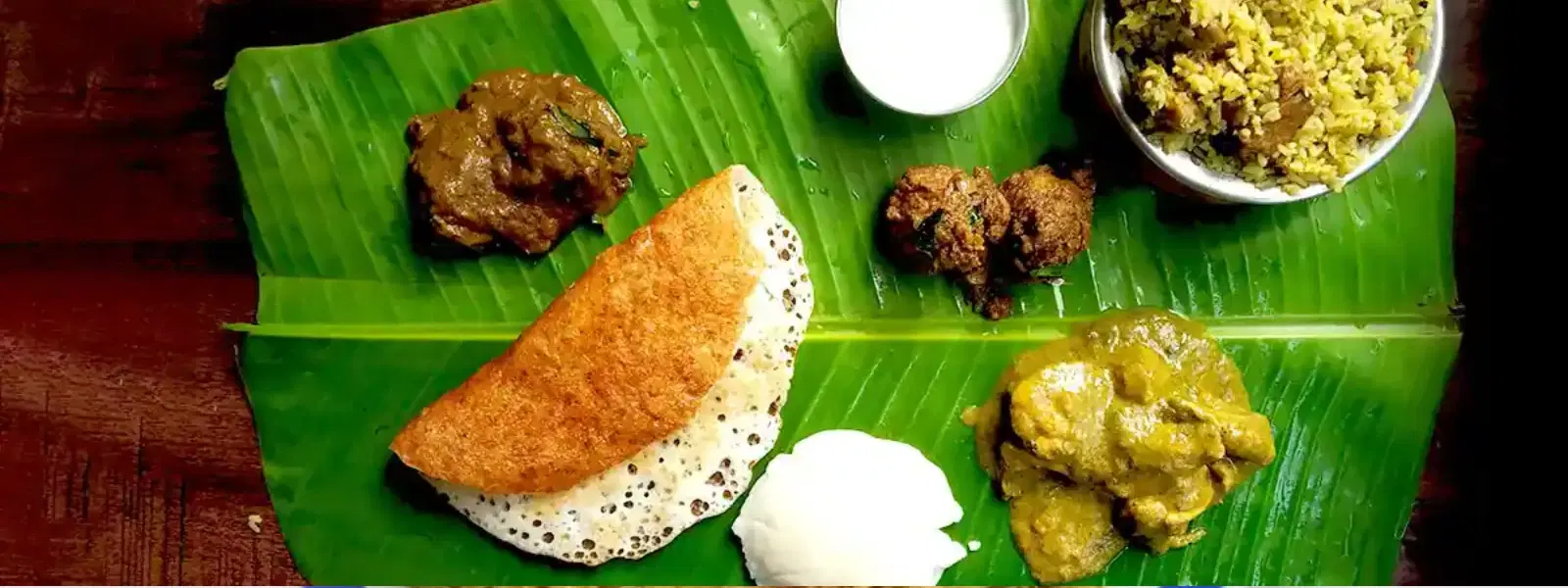
Hotels
•03 min read

Imagine strolling through the bustling streets of Chennai, where the aroma of sizzling spices and freshly cooked delicacies fills the air. The city is a culinary haven that celebrates the tradition of Tamil flavors, offering a vibrant feast for the senses. This blog delves into the heart of chennai traditional food, answering frequently asked questions and uncovering the secrets behind its authentic dishes, rich cultural heritage, and street food adventures. By exploring these insights, you will discover how south indian cuisine weaves together passion, tradition, and regional ingredients to create a dining experience like no other.
Chennai’s cuisine is a living testament to Tamil Nadu’s rich cultural heritage. The culinary practices have been passed down through generations, blending influences from ancient traditions with local innovations. The dishes are crafted using fresh, regional ingredients such as rice, lentils, coconut, and a variety of aromatic spices. These ingredients not only add robust flavors but also highlight the natural bounty of the region, ensuring that every meal is a celebration of taste and tradition.
At the core of traditional tamil recipes lie rice-based dishes and a mastery in fermenting foods. Staples like idli, dosa, and sambhar are more than just meals—they are cultural symbols of the region. The use of intricate spice blends and time-honored cooking methods, including slow cooking and stone grinding, preserve the nutritional value and natural flavors of the ingredients, offering a genuine taste of traditional south indian meals.
No exploration of Chennai’s culinary scene is complete without sampling classics such as Pongal, Chettinad chicken curry, kothu parotta, and the sweet payasam. Whether you are a meat lover or a vegetarian, there’s something to delight every palate. For vegetarians, dishes like kuzhi paniyaram, sundal, and keerai vadai offer a flavorful journey into authentic chennai dishes that are as nutritious as they are delicious.
In Chennai, desserts hold a special place in both everyday life and festive celebrations. Iconic sweets such as Mysore pak, jangiri, and boli encapsulate the spirit of local festivities. These desserts are not only scrumptious but also steeped in cultural importance, often shared during celebrations and cherished as symbols of communal joy and heritage.

Chennai street food is an adventure in every bite. The city boasts an array of street delicacies such as atho, bajji, pani puri, and the ever-refreshing jigarthanda. These offerings are perfect for those looking to enjoy a quick, vibrant snack that captures the essence of traditional tamil flavors. A stroll along Marina Beach promises an added bonus, where you can savor local snacks like sundal amidst the sea breeze and panoramic views.
While the city has many hidden gems, traditional street food markets and local favorites form the heart of Chennai’s gastronomic landscape. Exploring popular local markets like those along busy streets reveals an array of authentic options where locals gather to celebrate their regional indian cuisine. These spots are where the city’s food culture truly shines through, offering a taste of popular tamil nadu food that is both vibrant and unpretentious.
In Tamil Nadu, food is not just sustenance—it is a language of tradition and togetherness. Traditional meals play a central role in festivals, rituals, and everyday life, binding communities through shared experiences and cherished customs. Every dish tells a story, reflecting the diverse influences that have shaped south indian cuisine over the centuries.
Modern Chennai is witnessing a culinary revolution with a growing emphasis on sustainability. Zero-waste initiatives and farm-to-table restaurants are emerging, combining environmental awareness with gastronomic tradition. This innovative approach ensures that while the rich heritage of chennai traditional food is preserved, it also evolves to meet the demands of a more eco-conscious consumer.

Did you know? The key to authentic Tamil flavors lies in the careful balance of spices and the use of traditional cooking methods like stone grinding and slow cooking. These techniques preserve the natural taste and nutritional value of the ingredients.
Idli and dosa are considered staples, but dishes like Chettinad chicken curry, kothu parotta, and jigarthanda are crowd favorites.
Rice-based dishes, such as sambhar, rasam, and Pongal, form the core of Tamil Nadu’s traditional food.
Chennai is famous for its street food, including sundal, bajji, and jigarthanda, as well as its authentic Chettinad cuisine.
Yes, rice is a staple in Chennai’s traditional meals, often paired with lentils, vegetables, and a variety of chutneys.
Chennai’s culinary landscape offers an immersive journey into the world of traditional tamil recipes, where every dish reflects the region’s rich heritage and deep-rooted cultural practices. Whether wandering amidst the vibrant street food scene or indulging in classic south indian meals at local eateries, the experience is as educational as it is delicious. Embracing Chennai food culture not only deepens our appreciation for authentic chennai dishes but also connects us with a living tradition that continues to evolve while staying true to its roots.